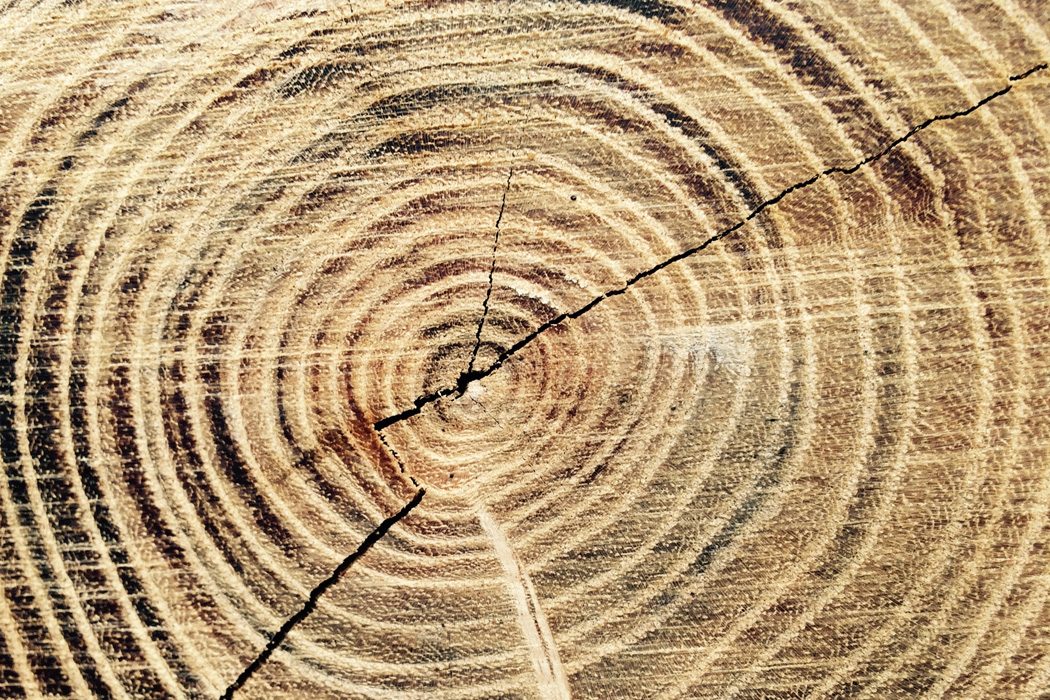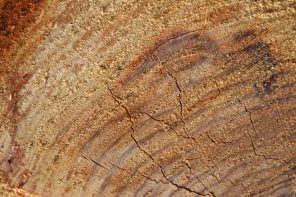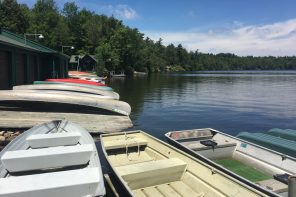On May 29, 2011, I was in conference with a guest at The Hermitage, a retreat center where I serve as Spiritual Director. It was late afternoon. The sky had threatened rain all day. The wind had been increasing. The white pines outside the window gave a sudden mighty roar. I glanced up to see an ugly yellow in the sky. I knew that color. It was time to move to a safer place than the third floor of an old barn. I casually suggested that we move downstairs and continue our conversation. No panic needed, it might just be “weather.”
No sooner had we re-situated, though, than the wind began to hurl against the barn, tearing at the siding and slinging water at the windows as if to break them. Yes, it was, as I had thought, a tornado. We stopped talking, we couldn’t hear anyway, and watched as the eye of the storm passed by to the west. The power flickered out. The wind shut off. The rain abruptly stopped. Stillness. Everywhere. No buildings were touched, no yard trees downed, and no one was hurt. Eventually darkness snuggled in around the ghastly gray of the aftermath. We went to bed.
The next morning, I took my customary half-hour walk in the wood and began to see the trouble the storm had caused. Limbs blocked the trails. I hauled what I could manage out of the way and skirted the bigger branches. Ascending to a ridge, I stopped, tears springing to my eyes. Where there should have been green canopy, there was blue sky. The wood was a turmoil of twisted trunks, scattered leaves, and puzzling heaps of maple and oak branches woven together. Instant wood walls, some of them eight trunks high, had been thrown up by the storm. I could not pass. My beloved wood was gone and in its place, a messy, soggy, impossible place where a struggle had been waged and lost. Death was everywhere.
I marched home hardly aware of my anger. This was my place, my home, my refuge from all that I thought might do me harm. This was the arena for my best thinking. Here I spoke the brave words that would repair the world, words I did not yet dare voice anywhere else. In this wood, I sought and fought God. I found, was found, lost ground, and gained wisdom. Where would I go for the strength to live? Without the wood? Where?
As days passed, lumbermen came to see if anything could be salvaged. No, it was too remote, too difficult. “In 50 years, you won’t even know this happened,” I heard more than once. But, it would never be the same. Hickory trees, resilient beyond belief, bend instead of breaking and arched over the rubble like croquet wickets in some giant game. Walnut trunks along the edge, snapped cleanly at about 20 feet, looked like giant fence posts. Black locusts, more than a hundred years old, were upended with their castle-like roots towering above my head, opening eight-foot-deep “caves” where the roots had been. Softer trees like maple and poplar were splintered, twisted, and strewn in the direction of the storm, which had stayed on the ground for 30 miles, plowing up highways and taking down power lines along the way. But here, there was no “here” any more.
I stayed out of the woods for a couple of weeks, unable to bear the sight of my tree-friends so hideously slashed and splayed on the ground. Slowly, I found other ways to walk in the wood. I began to walk around the worst parts and then to the edge and back again. By month’s end, I had developed a new routine that included checking to see if new trees were emerging from the roots still underground as I threaded my way over and under trunks looking for vestiges of the old trail. It was a new adventure. And, yes, there was plenty of life pushing up everywhere. My dad used to say, mostly as a warning not to cheat when weeding in the garden, “The life of the plant is in the roots.” So, from the roots I looked for and saw abundant life.
Six years on, we have reopened the last of the trails, building swooping new trails into the root “caves” of the largest trees. We fight a new battle against the emerging brush—vigorous thorny rose thickets, aggressive berry canes, and wandering saplings that spring up right in the middle of a cleared trail. The birds and small mammals are happily making homes. The deer and turkeys are finding new paths through the growth. There are a few “wolf” trees that survived and tower over the rest. These will have to be girdled in a few years to keep them from stealing all the nutrients from the soil.
I know the wood will never be the same again and I know that the wood rapidly became another place in which I find myself at home; in which I still find the words to heal the world. It is the place I fight with God about things that matter, a place where I lose that fight and gain insight. It is the place I love to walk and think and pray. But it will never be the same. Nor will I. And here’s the blessing in the change, each new challenge of this wood has shaped me. Each loss, each difficulty, each long wait for another person to help with the heavy work, each time I met with an obstacle, I grew into someone who accepts, and sometimes embraces, the slow and slower working of God in the world.
My shattered corner of 15 acres of wood became for me the lesson I needed when three years after the tornado, an international oil company clear-cut four more acres of the wood to lay a pipeline carrying some of the most poisonous crude oil in the world (diluted bitumen) right under my feet, under my wood, hidden from sight. I seethed and ached for the wood, for the earth, for the place. But, I also knew by then the hope that grows in places where life is shattered.
I did protest. I did lament. I did pray. I do hope. And hope continues to work in me showing me that flowers can thrive above a pipe of full of poison. The life that is nurtured in that place, is the evidence of a resilience, without which, we would certainly be doomed. There is much to fear. And in each fear, there is room for hope to grow. My work is to find the hope.
Last spring, I was finally able to make it to the place in the wood I called the “Trillium Bank.” These spring flowers grew only in that one place, and it had been blocked from access for five years. Being delicate flowers and rather picky about their habitat, I thought they might have been too disturbed to have survived. I came up out of a root “cave” to where I thought they should be growing. There were none in sight. But as I looked around behind me on a lower slope, there were hundreds of the delicate blooms. White, purple, and yellow, they stood in profusion, having washed downhill from their former place; they were bathed in the spring sunlight, growing more vigorously than ever.




